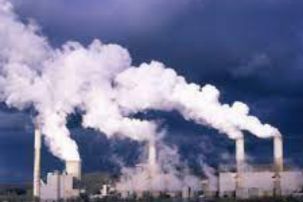Lesson summary
Students investigate the role of greenhouse gases in the Earth’s atmosphere, their contribution to the greenhouse effect and their influence on the Earth’s temperature. As part of this activity students are asked to design, implement and observe an experiment simulating the greenhouse effect. Finally, students will reflect on their learning by comparing CO2 and temperatures on Earth to those on Venus.
These activities “… are an invaluable tool for teachers to address climate change in an educationally relevant, scientifically sound, and action-based way.” – Tim Flannery (Read more)
Learning intentions:
Students will...
- understand the composition and effect of greenhouse gases, particularly their effect on the temperature of the Earth
- design, implement and observe an experiment simulating the greenhouse effect.
Lesson guides and printables
Curriculum links
Select your curriculum from the options below.
Lesson details
Curriculum mapping
Australian Curriculum content descriptions:
Year 10 Science:
- Global systems, including the carbon cycle, rely on interactions involving the biosphere, lithosphere, hydrosphere and atmosphere (ACSSU189)
- Plan, select and use appropriate investigation methods, including field work and laboratory experimentation, to collect reliable data; assess risk and address ethical issues associated with these methods (ACSIS199)
- Select and use appropriate equipment, including digital technologies, to systematically and accurately collect and record data (ACSIS200)
- Evaluate conclusions, including identifying sources of uncertainty and possible alternative explanations, and describe specific ways to improve the quality of the data (ACSIS205)
General capabilities: Critical and creative thinking.
Cross-curriculum priorities: Sustainability OI.1.
Syllabus Outcomes: SC5-6WS, SC5-7WS, SC5-12ES.
Time required: 60 mins
Level of teacher scaffolding: Medium – oversee activity, facilitate discussion.
Resources required
- Pen and paper OR access to online drawing tool (Sketchpad),
- Internet access
- student worksheet
In addition, each group conducting the experiment will need:
- A Seed tray
- Soil
- Seeds
- Water
- Plastic food wrap
- Thermometer
- Digital technology opportunities: Digital sharing capabilities.
- Homework and extension opportunities: This activity includes opportunities for homework and extension.
- Key reading from We Are the Weather Makers: Chapter 2 – The Great Aerial Ocean
- Further reading from the book: Chapter 3 – The Greenhouse Gases, Chapter 17 – Danger Ahead
Additional info
Cool Australia would like to acknowledge:
- Tim Flannery
- David Harding, Rose Iser, Sally Stevens
- Text Publishing and Purves Environmental Fund
- Climate Council


Welcome back!
Don't have an account yet?
Log in with:
Create your free Cool.org account.
Many of our resources are free, with an option to upgrade to Cool+ for premium content.
Already have an account?
Sign up with:
By signing up you accept Cool.org's Terms and Conditions(Opens in new tab) and Privacy Policy(Opens in new tab).